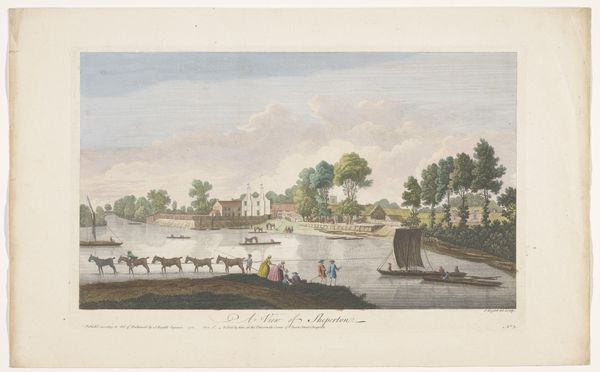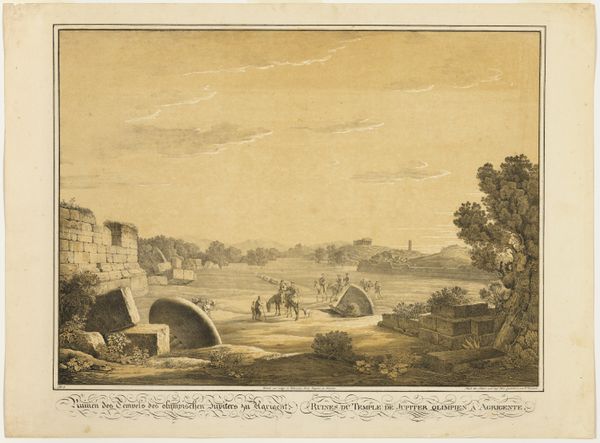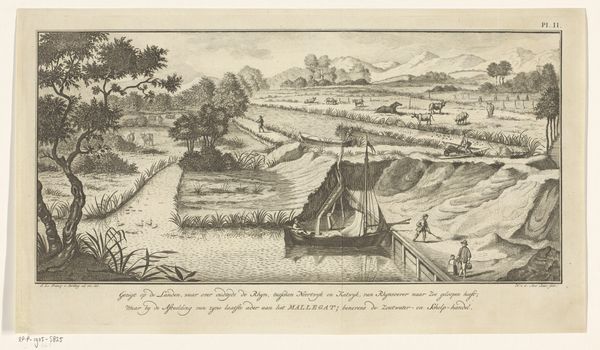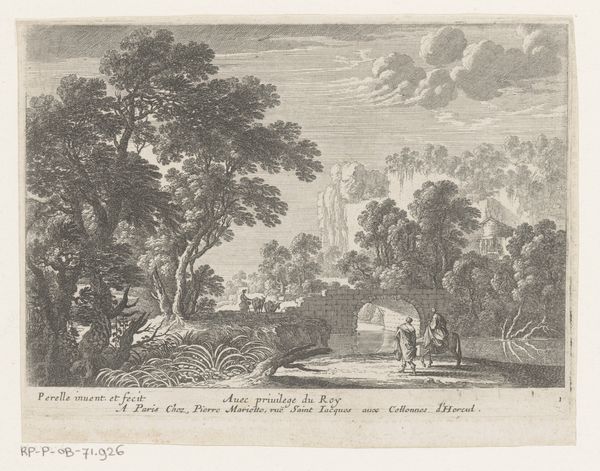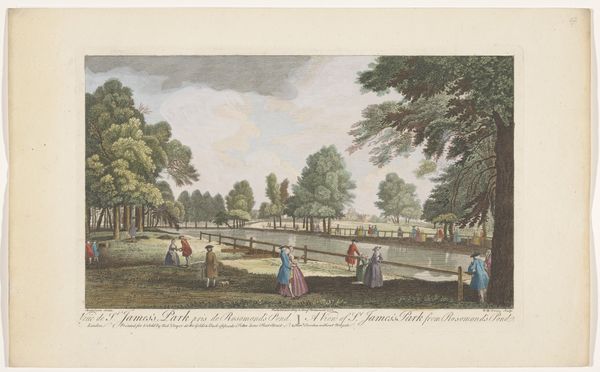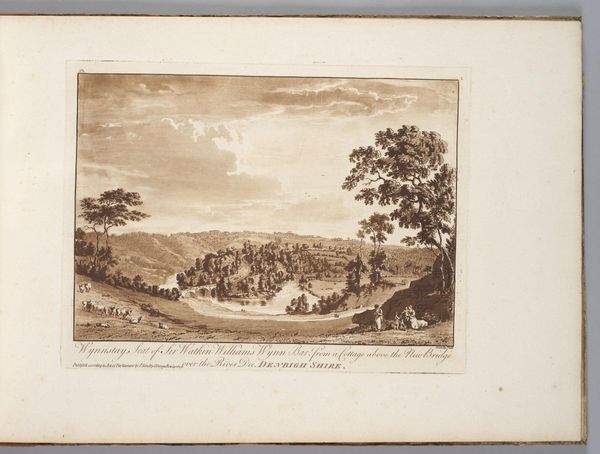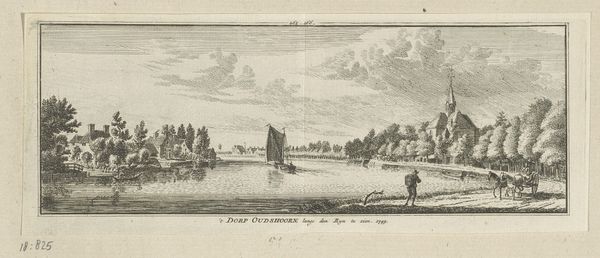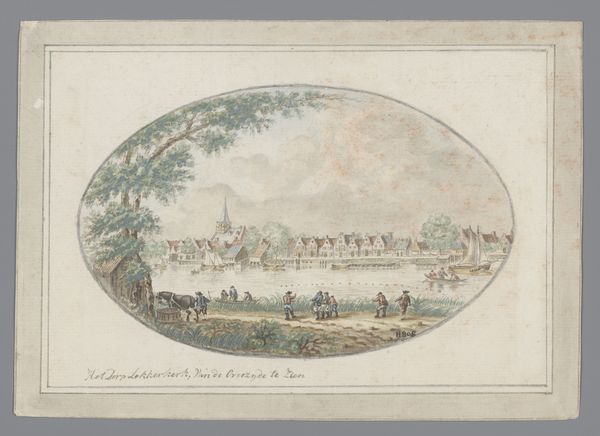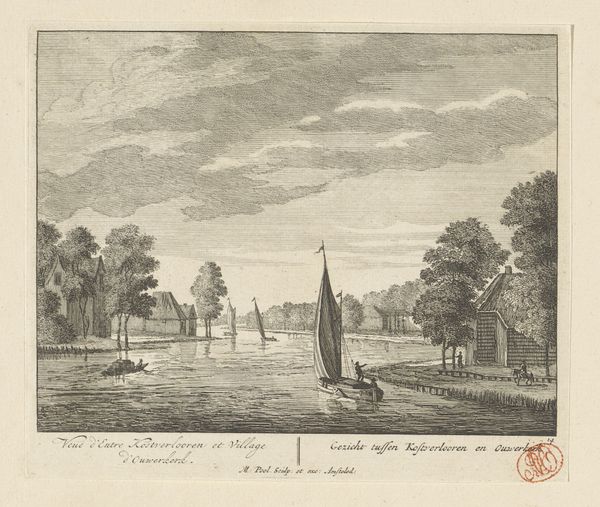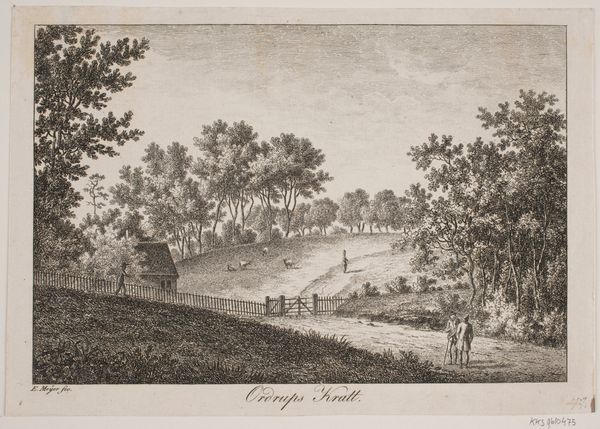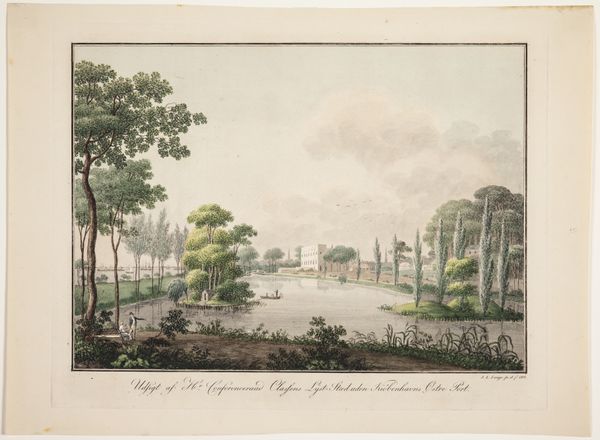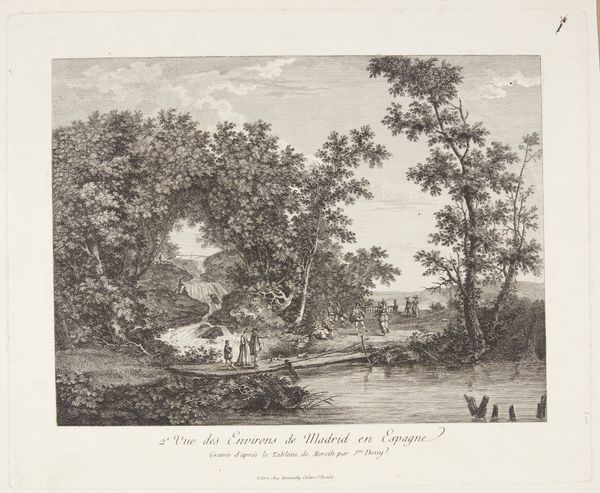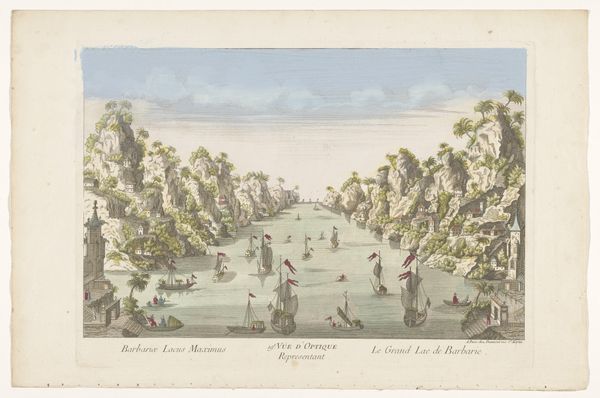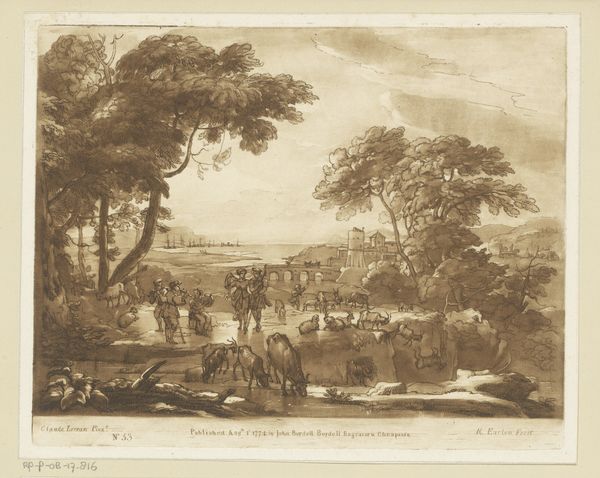
print, watercolor
# print
#
landscape
#
watercolor
#
cityscape
#
history-painting
#
rococo
Dimensions: height 293 mm, width 418 mm
Copyright: Rijks Museum: Open Domain
Curator: Here we have “View of the Harbour of Portsmouth,” dating roughly between 1745 and 1775 and attributed to Jean-Francois Daumont. It’s currently housed at the Rijksmuseum. Editor: It has such a wonderfully placid quality. The eye is immediately drawn to the soft pastel washes of color; a tranquil foreground giving way to a bustling yet somehow restrained harbor scene. The formal arrangement is beautifully rendered, even idyllic. Curator: Indeed. Beyond its formal appeal, the artwork offers a glimpse into the socio-political landscape of the era. As Portsmouth was a major naval port, this image reflects the significance of maritime power and trade. The presence of figures in the foreground provides a view of class dynamics and leisurely observation amid intense naval activity. The inclusion of what might be identified as gentry could be argued as a form of nationalistic idealization and, equally, a form of social distancing. Editor: I'm fascinated by the composition. The framing of the view with trees gives depth. And I see that the rendering of light on water gives this port a sense of expansiveness. I suppose Daumont really succeeds at organizing details without making it feel cluttered, creating a compelling representation. Curator: The very detailed depictions of the ships at bay are indicative of that period and that cultural moment of exploration and colonization that relied, very overtly, on the military’s maritime expansion. They represent not just trade but the projection of imperial power globally and at what expense that wealth accumulation occurred. Editor: Looking closely at the line work, there’s an impressive crispness, particularly in the rigging and sails. One imagines Daumont relied on engravings to guide the delicate watercolor additions. Curator: Understanding it contextually enriches one's reading of what might be merely aesthetic appreciation into a deeper engagement of colonial representation and historical understanding. Editor: It allows for an appreciation of how aesthetic choices contribute to broader meaning. It has an arresting sense of depth within its formal constraints and stylistic grace.
Comments
No comments
Be the first to comment and join the conversation on the ultimate creative platform.
